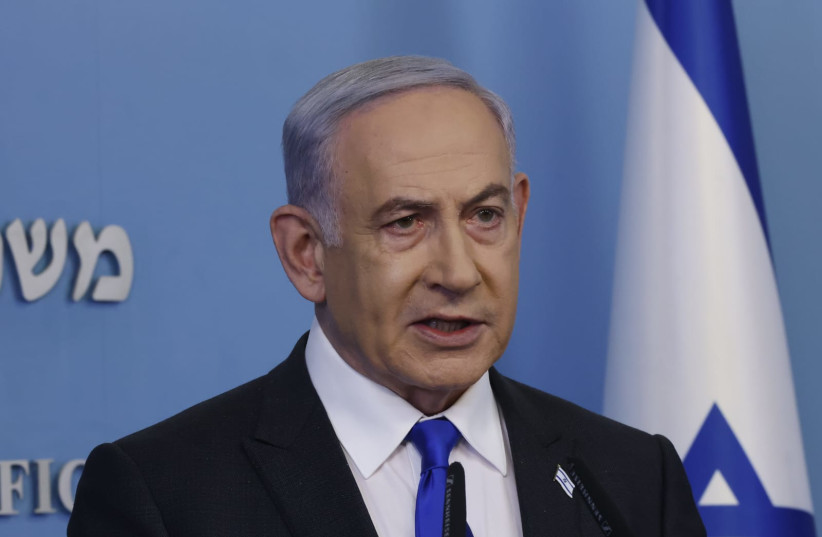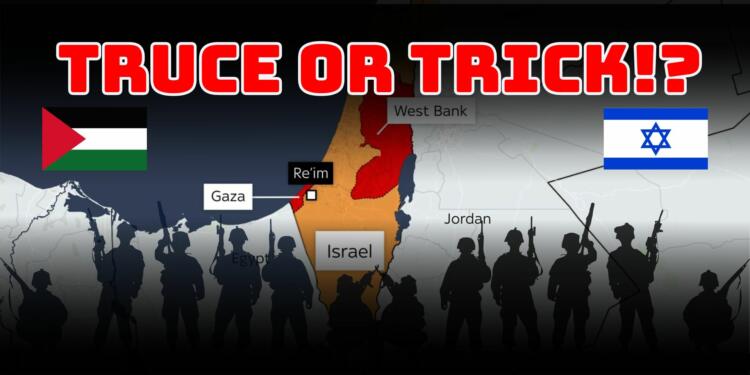The ongoing conflict between Israel and Palestine, particularly in the Gaza Strip, has deep historical roots and complex dynamics. Tracing back to early 20th-century tensions over territorial claims, the situation has evolved into a protracted struggle marked by sporadic violence and political impasses. In this analysis, we delve into the perspectives, negotiations, and quest for peace amidst escalating tensions. Critical participants, including Israeli Prime Minister Benjamin Netanyahu, Hamas representatives, and international mediators, navigate a delicate balance of power and interests. Against a backdrop of rejected ceasefires, military operations, and diplomatic efforts, the region grapples with profound humanitarian crises and geopolitical ramifications. Understanding the multifaceted nature of the conflict is essential for discerning paths toward reconciliation and sustainable peace.
Background
The Israel-Palestinian conflict traces back to the demand for a Jewish homeland in Palestine before World War I, fueled by waves of Jewish migration and backed by the Balfour Declaration of 1917. In 1947, the UN proposed a partition plan for Palestine, leading to conflict between Arab and Jewish groups. In 1948, Israel declared statehood, sparking the Arab-Israeli War, resulting in Israel’s establishment and territorial gains. The 1967 Six-Day War further expanded Israeli control, capturing the West Bank from Jordan and Gaza Strip from Egypt.
The Oslo Accords of 1993 allowed for the establishment of the Palestinian Authority in the West Bank and Gaza Strip. However, internal strife ensued, with Hamas seizing control of Gaza in 2006. Presently, Hamas governs Gaza while Fatah controls the West Bank, each with differing relations with Israel. Despite numerous peace efforts, the conflict remains unresolved, marked by sporadic violence and ongoing political tensions.
Key Players
Benjamin Netanyahu, the Israeli Prime Minister, has staunchly rejected a proposed ceasefire in Gaza by Hamas, emphasizing the pursuit of “absolute victory” over the militant group instead. Netanyahu rebuffed US pressure, indicating a willingness to continue military operations in Rafah, Gaza, despite concerns over civilian casualties. He asserted that Hamas’s collapse is necessary for any resolution and ruled out leaving Hamas in control of Gaza, despite international apprehension about potential war crimes.
Hamas, represented by senior official Khalil al-Hayya, has sought negotiations in Cairo, mediated by Egypt and Qatar. Their proposed three-phase plan includes prisoner exchanges, Gaza reconstruction, and a gradual ceasefire over 135 days. Hamas views Netanyahu’s actions as genocidal and aims to secure the release of Palestinian prisoners and end the conflict.
The United States, led by Secretary of State Antony Blinken, has engaged in diplomatic efforts to broker a ceasefire and larger settlement. Blinken expressed optimism about the potential for agreement, noting Hamas’s willingness to negotiate hostages’ release and the ceasefire proposal. However, Netanyahu’s opposition to Palestinian statehood complicates broader peace negotiations. Egypt has facilitated talks between Israel and Hamas, aiming to achieve calm in Gaza.
Rejected Ceasefire and Military Operations
Benjamin Netanyahu rejected the proposed ceasefire in Gaza by Hamas, asserting that Israel seeks “absolute victory” over the militant group, dismissing US pressure for a mediated settlement. He affirmed Israel Defense Forces’ commencement of operations in Rafah, indicating intent to escalate military actions despite international concerns about civilian casualties. Netanyahu’s stance reflects a refusal to consider any arrangement leaving Hamas in control, emphasizing military collapse as the sole solution.

The confirmed IDF operations in Rafah signify Israel’s determination to pursue military objectives despite mounting international apprehension. This move raises concerns about potential large-scale loss of civilian lives and accusations of war crimes, particularly as the conflict exacerbates the humanitarian crisis in Gaza. Netanyahu’s rejection of US-backed ceasefire efforts highlights strained international relations and divergent approaches to resolving the conflict.
Continued military action not only deepens humanitarian crises in Gaza but also complicates efforts for a sustainable ceasefire and broader regional stability. Netanyahu’s opposition to Palestinian statehood and reluctance to make concessions risk destabilizing his hawkish governing coalition and straining relations with key allies like the US. The deadlock in negotiations underscores the complex dynamics of the Israeli-Palestinian conflict, with implications for regional security and the pursuit of a lasting peace settlement.
International Response and Mediation Efforts
The ongoing conflict between Israel and Hamas in Gaza has sparked international concern, prompting diplomatic efforts to broker a ceasefire. Despite pressure from the United States and other mediators, Israeli Prime Minister Benjamin Netanyahu has rejected Hamas’s proposed ceasefire terms, emphasizing a commitment to achieving “absolute victory” over the militant group. Netanyahu’s stance indicates a preference for continued military operations, with recent instructions for the Israel Defense Forces to commence operations in the city of Rafah.
Antony Blinken, the US Secretary of State, has been actively involved in negotiation efforts. He acknowledges the significant challenges in bridging the gap between Israel and Hamas but remains optimistic about the possibility of reaching an agreement. Blinken views Hamas’s proposal as offering an opportunity for further negotiations, despite some “clear non-starters” within it. He emphasizes relentless efforts to achieve a ceasefire agreement.

Hamas’s proposal outlines a detailed three-phase plan aimed at ending the conflict over four and a half months. The plan, presented through Qatari and Egyptian mediators, involves the exchange of hostages, Palestinian prisoner releases, reconstruction efforts in Gaza, and the withdrawal of Israeli forces. Each phase of the truce is set to last 45 days, with provisions for the release of hostages, exchange of bodies, and potential agreements on ending the war. While some mediators view the proposal positively as a sign of Hamas’s willingness to engage in negotiations, Netanyahu rejects it, asserting that surrendering to Hamas’s conditions would lead to further tragedy for Israel.
Critical elements of the negotiation include the release of hostages held by both sides and the exchange of prisoners. Previous truces have involved the release of Israelis in exchange for Palestinian prisoners, but the new proposal includes more hardened militants, which presents a significant hurdle in the negotiations.
The conflict, initiated by Hamas’s attack on Israel in October, has resulted in significant casualties and displacement, with thousands of Palestinians killed and millions displaced. International stakeholders are concerned about the humanitarian crisis in Gaza, with calls for increased aid and a cessation of hostilities to alleviate the suffering of civilians.
The diplomatic efforts face challenges due to the divergent goals and positions of the parties involved. While mediators seek a ceasefire and long-term solutions, Netanyahu’s government remains wary of concessions that could jeopardize Israel’s security or undermine its sovereignty. Despite these obstacles, international pressure persists for a peaceful resolution to the conflict.
Political Implications and Challenges
Israeli Prime Minister Benjamin Netanyahu’s rejection of Hamas’s proposed ceasefire and his insistence on pursuing “absolute victory” over the militant group reflect not only strategic considerations but also his political motivations. Facing plummeting public approval ratings, Netanyahu is under pressure to project strength and resolve in handling the Gaza conflict. By rejecting ceasefire terms perceived as capitulation to Hamas, he seeks to rally domestic support and bolster his political standing, particularly within his hawkish governing coalition.
Netanyahu’s reluctance to entertain negotiations that may lead to concessions, such as agreeing to a Palestinian statehood, is driven by his longstanding opposition to the establishment of an independent Palestinian state. This opposition stems from his conservative political ideology and concerns about the security implications of a sovereign Palestinian entity. Any perceived concessions on this issue could jeopardize Netanyahu’s coalition government, particularly given the presence of right-wing parties staunchly opposed to Palestinian statehood.
Reaching a negotiated settlement in the Israel-Hamas conflict is further complicated by the entrenched positions of the parties involved. Hamas, designated as a terrorist organization by Israel and several other countries, remains committed to its goal of “liberating” Palestinian territories, including Israel, through armed struggle. On the other hand, Netanyahu’s government prioritizes Israel’s security interests and is wary of concessions that may compromise its sovereignty or embolden militant groups.
Moreover, the broader geopolitical dynamics, including regional power struggles and the involvement of external actors, add layers of complexity to the negotiation process. Efforts to broker a ceasefire and achieve a lasting peace are hindered by divergent interests, historical grievances, and deep-seated mistrust between Israelis and Palestinians.
Despite the challenges, international pressure persists for a diplomatic resolution to the conflict, driven by concerns about the humanitarian toll and the destabilizing impact of prolonged violence on the region. However, achieving a negotiated settlement will require overcoming entrenched positions, addressing core grievances, and building trust between the parties involved.
In conclusion, the conflict between Israel and Hamas in Gaza persists amid staunch positions and complex political motivations. Benjamin Netanyahu’s rejection of ceasefire proposals reflects domestic political pressures and deep-seated security concerns. Despite diplomatic efforts led by Antony Blinken and mediation by Egypt and Qatar, achieving a lasting peace remains elusive. The humanitarian toll continues to mount, necessitating urgent action to alleviate suffering and prevent further escalation. Resolving this entrenched conflict demands genuine dialogue, mutual concessions, and international cooperation. While the road to peace is challenging, sustained efforts toward de-escalation and addressing underlying grievances offer hope for a more stable and prosperous future for both Israelis and Palestinians.
Also Read: From Reserves to Revenue: India’s Oil Cavern Lease with Abu Dhabi































